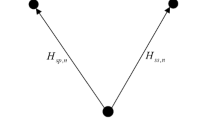Abstract
In order to make primary users (PUs) receive minimum interference generated from all secondary user (SUs) in underlay cognitive radio networks (CRNs), while ensure the quality of services (QoS) of SUs, a strategy of standard distributed optimal power control based on artificial fish swarm algorithm (AFSA) is proposed. The strategy considers interference plus noise ratio of each SU under the minimum threshold and the transmit power of each SU below the maximum permitted power. To well adapt to the dynamic communication scenarios and enhance QoS for SUs, an improved artificial fish swarm algorithm (IAFSA) is also presented. Simulation-based performance analysis illustrate that, in comparison with the particle swarm optimization algorithm, chaos particle swarm optimization algorithm and shuffled frog leaping algorithm, both AFSA and IAFSA can lead SUs to transmit less power in order to reduce the interference to PUs, and simultaneously provide fast global convergence, stability, robustness to CRNs, and better communication performance.









Similar content being viewed by others
References
Liang, Y.-C., Chen, K.-C., Li, G. Y., & Mahonen, P. (2011). Cognitive radio networking and communications: An overview. IEEE Transactions on Vehicular Technology, 60(7), 3386–3407.
Gavrilovska, L., Denkovski, D., Rakovic, V., & Angjelichinoski, M. (2014). Medium access control protocols in cognitive radio networks: Overview and general classification. IEEE Communications Surveys & Tutorials, 16(4), 2092–2124.
Sun, G., Feng, X., Tian, X., Gan, X., Youyun, X., Wang, X., & Guizani, M. (2014). Coalitional double auction for spatial spectrum allocation in cognitive radio networks. IEEE Transactions on Wireless Communications, 13(6), 3196–3206.
Haykin, S., & Fuster, J. M. (2014). On cognitive dynamic systems: Cognitive neuroscience and engineering learning from each other. Proceedings of the IEEE, 102(4), 608–628.
Monemi, M., Rasti, M., & Hossain, E. (2014). On joint power and admission control in underlay cellular cognitive radio networks. IEEE Transactions on Wireless Communications, 14(1), 265–278.
Wang, W., Guanding, Yu., & Huang, A. (2013). Cognitive radio enhanced interference coordination for femtocell networks. IEEE Communications Magazine, 51(6), 37–43.
Zazo, J., Zazo, S., & Valcarcel Macua, S. (2014). Distributed cognitive radio systems with temperature–interference constraints and overlay scheme. In 2014 Proceedings of the 22nd European signal processing conference (EUSIPCO).
Chen, L., & Zhao, X. (2014). Power control algorithm for cognitive radio based on chaos particle swarm optimization. Journal of Information and Computational Science., 11(12), 4277–4287.
Xiao, Y., Bi, G., & Niyato, D. (2011). A simple distributed power control algorithm for cognitive radio networks. IEEE Transactions on Wireless Communications, 10(11), 3594–3600.
Nadkar, T., Thumar, V., Tej, G. P. S., Merchant, S. N., & Desai, U. B. (2012). Distributed power allocation for secondary users in a cognitive radio scenario. IEEE Transactions on Wireless Communications, 11(4), 1576–1586.
Mietzner, J., Lampe, L., & Schober, R. (2009). Distributed transmit power allocation for multihop cognitive–radio systems. IEEE Transactions on Wireless Communications, 8(10), 5187–5201.
Sun, S., Di, J., & Ni, W. (2010). Distributed power control based on convex optimization in cognitive radio networks. In International conference on wireless communications and signal processing (WCSP2010).
Karaca, H. M., Kurt, T., Dicle, S. Z., & Anarim, E. (2013). Auction-based throughput maximization in cognitive radio networks under interference consrtaint. Wireless Personal Communnications, 72(2), 1259–1275.
Li, X. L., Shao, Z. J., & Qian, J. X. (2002). An optimizing method based on autonomous animates: Fish-swarm algorithm. Systems Engineering Theory and Practice, 22(11), 32–38.
Bastos Filho, C. J. A., Silva, W. A. S., & Lira, L. R. M. (2014). Comparing meta-heuristics for AdaBoost training applied to platelets detection. IEEE Latin America Transactions, 12(5), 942–950.
Cheng, Z., & Hong, X. (2012). PID controller parameters optimization based on artificial Fish Swarm Algorithm. In The fifth international conference on information and contro intelligent computation technology and automation (ICICTA2012).
Gao, Y., Guan, L., Wang, T., & Cong, X. (2013). Research on the calibration of FOG based on AFSA. In IEEE international conference on mechatronics and automation (ICMA 2013).
Wang, C.-R., Zhou, C. & Ma, J.-W. (2005). An improved artificial fish-swarm algorithm and its application in feed-forward neural networks. In Proceedings of international conference on machine learning and cybernetics.
Fernandez-Martinez, J. L., & Garcia-Gonzalo, E. (2011). Stochastic stability analysis of the linear continuous and discrete PSO models. IEEE Transactions on Evolutionary Computation, 15(3), 405–423.
Duan, H. B., & Liu, S. Q. (2010). Non-linear dual-mode receding horizon control for multiple unmanned air vehicles formation flight based on chaotic particle swarm optimizations. IET Control Theory and Applications, 4(11), 2565–2578.
Zheng, S.-L., Lou, C.-Y., & Yang, X.-N. (2010). Cooperative spectrum sensing for cognitive radios based on a modified shuffled frog leaping algorithm. Acta Physica Sinica, 59(5), 3611–3617.
Wang, H.-M., Luo, M., Yin, Q., & Xia, X.-G. (2013). Hybrid cooperative beamforming and jamming for physical layer security of two-way relay networks. IEEE Transactions on Information Forensics and Security, 8(12), 2007–2020.
Duan, Y., & Harley, R. G. (2011). A novel method for multiobjective design and optimization of three phase induction machines. IEEE Transactions on Industry Applications, 47(4), 1707–1715.
Acknowledgments
This work is supported by the National Natural Science Foundation of China under Grant No. 61171079, and scientific research fund of Jilin Provincial Education Department (Grant No. 2013325).
Author information
Authors and Affiliations
Corresponding author
Rights and permissions
About this article
Cite this article
Chen, L., Zhao, X. An Improved Power Control AFSA for Minimum Interference to Primary Users in Cognitive Radio Networks. Wireless Pers Commun 87, 293–311 (2016). https://doi.org/10.1007/s11277-015-3043-5
Published:
Issue Date:
DOI: https://doi.org/10.1007/s11277-015-3043-5




